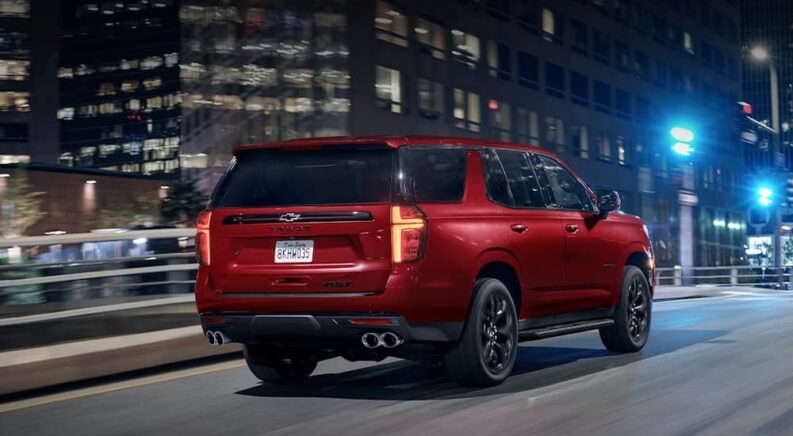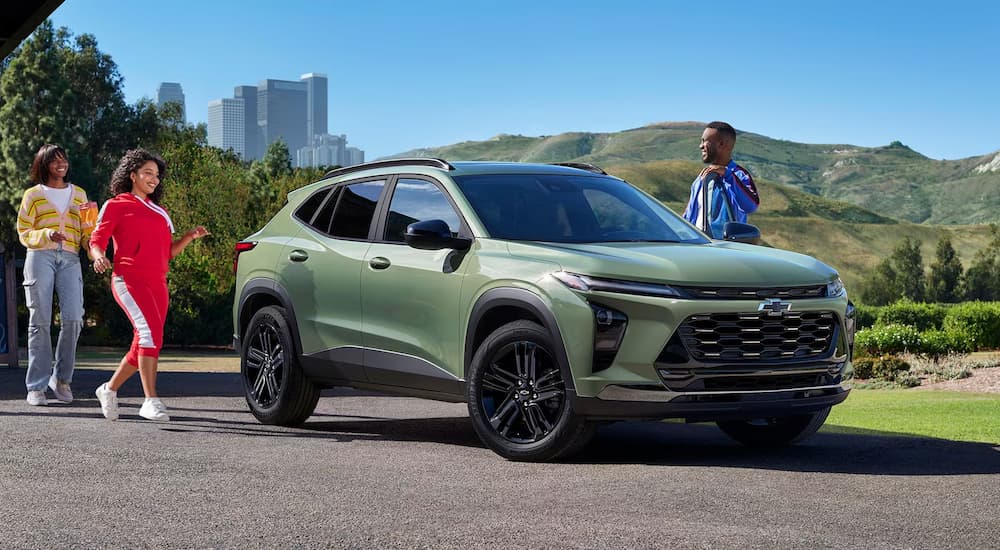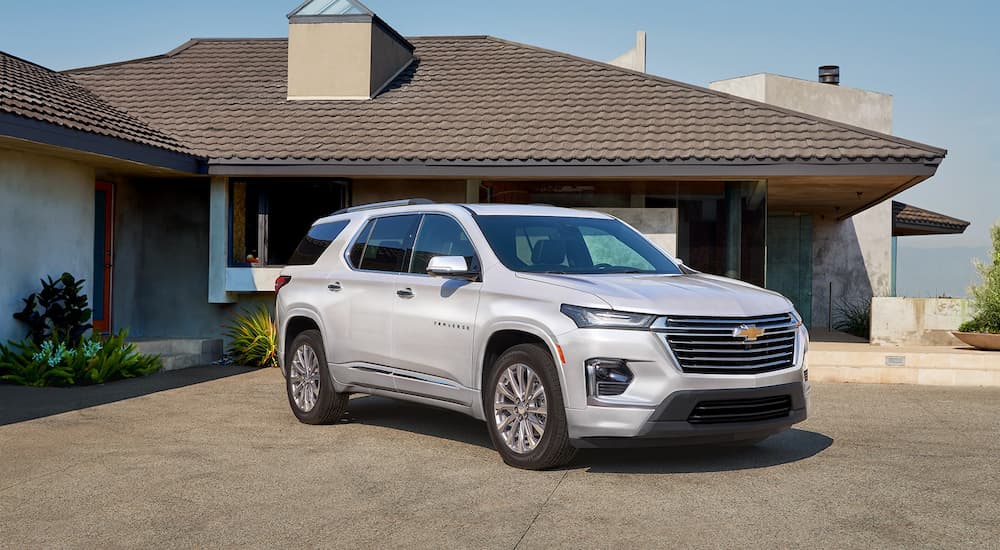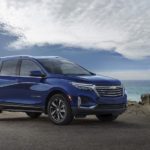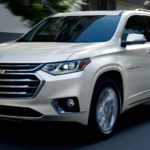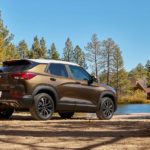One of the things that Chevy fans can enjoy when it comes to the lineup of their favorite manufacturer is that it includes a wide selection of different vehicles. While Chevy still has a massive lineup, the actual types of vehicles they offer have dwindled in recent years. There was a time several years ago when you could head to a Chevy dealer and find numerous options for sedans and similar cars, along with impressive trucks and a solid selection of crossovers and SUVs. But the pool of vehicles you’ll find these days has shrunk in some key ways.
Now, if you’re interested in a sedan, you’ve got the midsize Chevy Malibu, but that’s it. There’s no more Impala, no more Cruze, and we’ve said farewell to small options like the Sonic and Spark. The Corvette is still going strong thanks to its mid-engine redesign, but now the Camaro is coming to an end, leaving us with even fewer cars to choose from. Chevy trucks are still as impressive as ever, though, and the upcoming Silverado EV looks excellent, but it’s interesting that Chevy hasn’t seen fit to deliver a compact pickup to match the Ford Maverick. What we find no shortage of when looking at Chevy’s lineup, however, is crossover and SUV models.
Exploring Chevy SUV Options
To get to the heart of this subject, I think it’s best to look at Chevy’s SUV lineup and see what they offer overall. There are eight different crossovers and SUVs available from Chevy at the moment, with two more on the horizon, creating one of the biggest overall lineups out there. That’s a lot of SUVs, and I can’t help but wonder if they all really need to be there. This just brings me back to my original point: has Chevy become an SUV company? Let’s take a look at this lineup and see what each one has to offer.
Chevy Bolt EV/EUV
Technically the Bolt EV is a hatchback, not a crossover, but it’s very close to subcompact crossover territory. Chevy even lists it with the SUVs on their website. The Bolt EUV that shares a platform and overall design with the Bolt EV is definitely a subcompact SUV, so it’s worth looking at both of them. These are both all-electric vehicles, and the Bolt EUV has been the only option for the last couple years for anyone interested in a Chevy Battery Electric Vehicle (BEV) with an SUV design (that’s about to change though). Even with changes coming to this lineup, these two will probably stick around a while as entry-level options for BEV customers.
Chevy Trax
The first gas-powered offering in Chevy’s SUV lineup, the Trax actually took the 2023 model year off, and we weren’t sure it was coming back. Chevy apparently has plans for it, however, as the Trax has returned as a 2024 model with a redesign to launch an all-new generation. It’s a nice subcompact crossover, and it starts at a very low price, which is its biggest selling point. But with so many similar offerings here, it’s still in kind of a weird spot within Chevy’s lineup, particularly due to the…
Chevy Trailblazer
This is also a subcompact crossover that’s similar to the Trax in many ways. When the Trax took the 2023 model year off, I figured it was done and the Trailblazer would hold this spot on its own. The Trailblazer starts at a slightly higher price, and while it has the same standard engine as the Trax, there’s a more powerful option available here that you can’t get in the Trax. In previous years the Trailblazer had a size advantage over the Trax, but the redesign for the 2024 model year makes the Trax almost the same size. Having both of these models makes even less sense than before.
Chevy Equinox
Moving up in size, the Equinox is Chevy’s lone compact crossover model, making it a bit larger than the previous ones and giving it an identity of its own. You get a substantial increase in interior space with this model over the Trailblazer and Trax, which makes it much more functional for many drivers. This is a popular model that makes sense within Chevy’s lineup, and it’s clear that it will likely be around for some time to come.
Chevy Blazer
The Blazer is a midsize crossover that also clearly has a place for itself within Chevy’s lineup. The future models that have been announced make it clear that Chevy likes how enthusiastic drivers are about the Blazer. Although this is a midsize model, the jump in cargo space inside compared to the Equinox is actually not that significant, which is a bit surprising. Where the Blazer comes out on top, however, is with two powerful engine options that can make it a lot of fun to drive.
Chevy Traverse
Here we have another tricky one that also occupies a bit of a weird space in Chevy’s lineup. The Traverse is a midsize SUV like the Blazer, but it has three rows of seating rather than the Blazer’s two rows. Three-row midsize SUVs are a bit of a niche item, but there are enough of them out there to indicate that they must be a good choice for some drivers. The big drawback tends to be that the third row is not what you’d call spacious, so it’s best for kids rather than adult passengers. That just reinforces the niche role these vehicles have, though they can work well for families that have a lot of kids.
Chevy Tahoe
Moving up to the Tahoe, we have the first of two large SUVs in Chevy’s lineup. The Tahoe is a full-size model with numerous engine options including a diesel, which is something you don’t often find in SUVs. It has great features throughout its interior, but to really understand its place in the Chevy lineup, I have to note that it has about 25 cu.ft. of rear cargo space and almost 123 cu.ft. of total cargo volume behind the front seats. For comparison, the Traverse has 23 cu.ft. of rear space, and just over 98 cu.ft. of total cargo volume available. That will matter even more when we look at the…
Chevy Suburban
Here we have the largest model in Chevy’s SUV lineup. This is a full-size option like the Tahoe, but it dwarfs everything else. You have the same three engines here as the Tahoe, and in many ways they can be seen as identical when it comes to Chevy’s design and approach to the two of them. What the Suburban has that makes it unique is a more spacious interior than any other Chevy, with more than 41 cu.ft. of rear cargo volume and nearly 145 cu.ft. of total cargo space behind the front row. The Suburban is an absolute beast, and definitely deserves its spot as the largest SUV Chevy offers.
Even More to Come
You can see that this is already a very cramped lineup, and Chevy has at least two more SUVs on the way. They’ve announced BEV models of both the Equinox and the Blazer coming in the next year or so. While these might eventually replace their gas-powered namesakes, at least for now Chevy will offer SUV options numbering in the double digits. To me, there’s some padding in this lineup that could be eliminated to clean things up a bit. In particular, two subcompact crossovers are unnecessary, while the Suburban and Tahoe seem repetitive, and the Traverse also feels excessive.
Will Chevy actually trim any of these models or keep growing their SUV lineup? Only time will answer that question. What I can say, however, is that it’s easy to argue that Chevy is becoming an SUV company since they will have 10 SUVs available with only a single sedan, one sports car, and two different trucks (three if you count the Silverado HD models as separate). I’m hopeful that the move toward an all-electric lineup will revitalize things a bit, and perhaps we’ll see Chevy take some risks on more BEV sedans and sports cars. Until then, I can confidently say that Chevy is a great SUV company that also makes a few other things.

